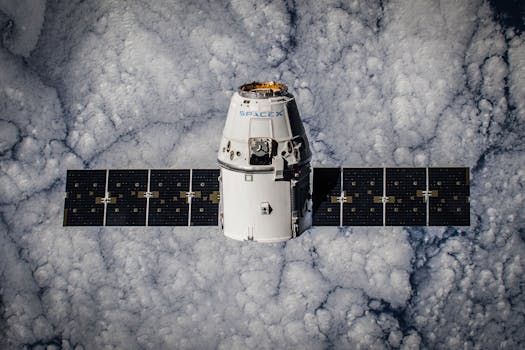
The Future of Satellites: Advancements and Innovations
The future of satellites is filled with exciting advancements and innovations, transforming the way we communicate, navigate, and explore space. With the increasing demand for satellite-based services, the industry is witnessing significant investments and technological breakthroughs. In this article, we will delve into the latest developments and trends shaping the future of satellites.
Introduction to the Future of Satellites
The use of satellites has become an integral part of our daily lives, from GPS navigation and weather forecasting to telecommunications and Earth observation. As technology continues to evolve, satellites are becoming more sophisticated, enabling new applications and services. The future of satellites holds tremendous potential, with ongoing research and development focused on improving satellite design, launch systems, and operational efficiency.
Advancements in Satellite Technology
Several advancements are driving the future of satellites, including the development of smaller, more efficient satellites, known as smallsats or cubesats. These miniaturized satellites offer reduced costs, increased agility, and improved performance, making them ideal for a wide range of applications, from Earth observation and communications to scientific research and technology demonstrations. Another significant advancement is the use of reusable launch systems, which are revolutionizing the way satellites are launched into space.
Reusable launch systems, such as those developed by SpaceX and Blue Origin, are capable of launching satellites into orbit and then returning to Earth, where they can be refurbished and launched again. This technology has significantly reduced the cost of accessing space, making it more affordable for companies and organizations to launch satellites. Additionally, advancements in propulsion systems, such as electric propulsion and advanced ion engines, are enabling satellites to operate more efficiently and extend their lifespan.
Emerging Trends and Applications
The future of satellites is also being shaped by emerging trends and applications, including the growth of satellite constellations, the development of satellite-based broadband services, and the increasing use of satellites for Earth observation and environmental monitoring. Satellite constellations, such as those being developed by OneWeb and Amazon’s Kuiper Systems, consist of hundreds or thousands of small satellites working together to provide global coverage and connectivity.
Satellite-based broadband services, such as those offered by ViaSat and Hughes Network Systems, are providing high-speed internet access to remote and underserved communities around the world. The use of satellites for Earth observation and environmental monitoring is also becoming more prevalent, with applications ranging from tracking climate change and deforestation to monitoring ocean health and natural disasters.
Furthermore, the future of satellites is closely tied to the development of the Internet of Things (IoT), which is driving the demand for satellite-based connectivity and data services. As the IoT continues to grow, satellites will play an increasingly important role in enabling the connection of devices and sensors in remote and hard-to-reach areas.
Conclusion and Future Outlook
In conclusion, the future of satellites is filled with exciting advancements and innovations, transforming the way we communicate, navigate, and explore space. As technology continues to evolve, we can expect to see significant improvements in satellite design, launch systems, and operational efficiency. The growth of satellite constellations, the development of satellite-based broadband services, and the increasing use of satellites for Earth observation and environmental monitoring are just a few examples of the emerging trends and applications shaping the future of satellites.
As we look to the future, it is clear that satellites will continue to play a vital role in enabling global connectivity, advancing scientific research, and driving economic growth. With ongoing investments and technological breakthroughs, the possibilities for satellites are endless, and we can expect to see significant advancements in the years to come.